
Feel free to add tags, names, dates or anything you are looking for


The notion that epochs are created by great individuals, giants who carry the enormous weight of an era’s destiny on their shoulders, is a widely held belief in our time. Although the 20th century did not lack thinkers and influencers, most of the distinguished people from this century encountered ordeals of different kinds. Included among these exceptional individuals is the flag-bearer of Georgian culture, Dimitri Shevardnadze.
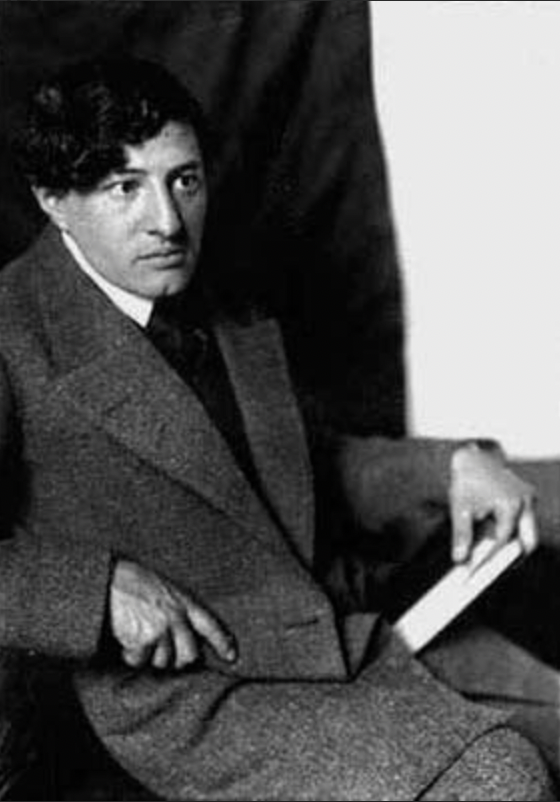
Dimitri Shevardnadze (1885-1937), 1912. Georgian National Museum. Shalva Amiranashvili Museum of Fine Arts
On June 10, 1937, the renowned public figure and artist Dimitri Shevardnadze said to his friend, the artist Ketevan Magalashvili, "I am not afraid of anything, because I will not be blamed for anything." On this fateful day, a man whose only "crime" was that he had dedicated his life to the advancement of Georgian culture, was arrested, and soon afterwards shot as an "enemy of the people" with the approval of Georgia's supreme government.
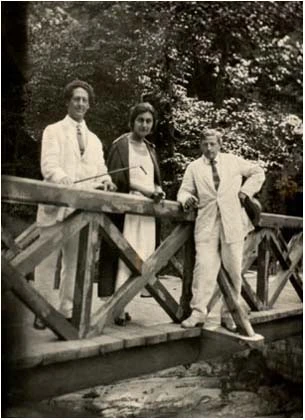
Alexandre Tsutsunava, Ketevan Magalashvili, Dimitri Shevardnadze 1930 - Photograph
Dimitri Shevardnadze's brief but active career left such a deep imprint on the development of Georgian culture that any reading of the history of Georgian art is today not possible without taking his amazing achievements into consideration.
Dimitri Shevardnadze was the founder of the Society of Georgian Artists, the initiator and first director of the National Art Gallery, and the inspiration behind the State Art Museum, "Metekhi," of which he was also the first director. Based on the latter institution, the Shalva Amiranashvili State Art Museum of Georgia was established. Shevardnadze’s name is interwoven with the foundation of Niko Pirosmanashvili's museum collection and the popularization of his work. Dimitri Shevardnadze also served as Deputy Head of the Georgian Monuments Protection Committee.
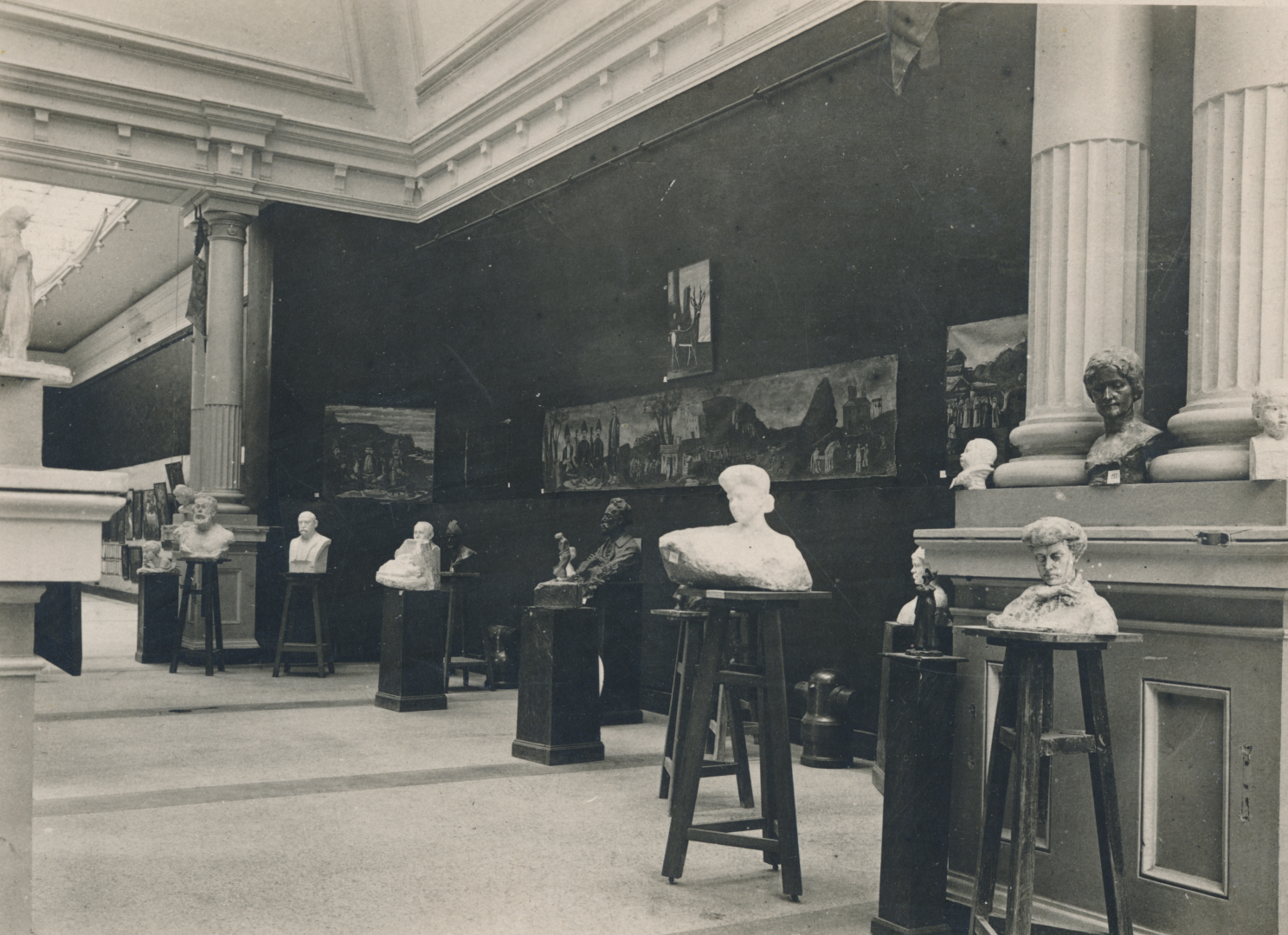
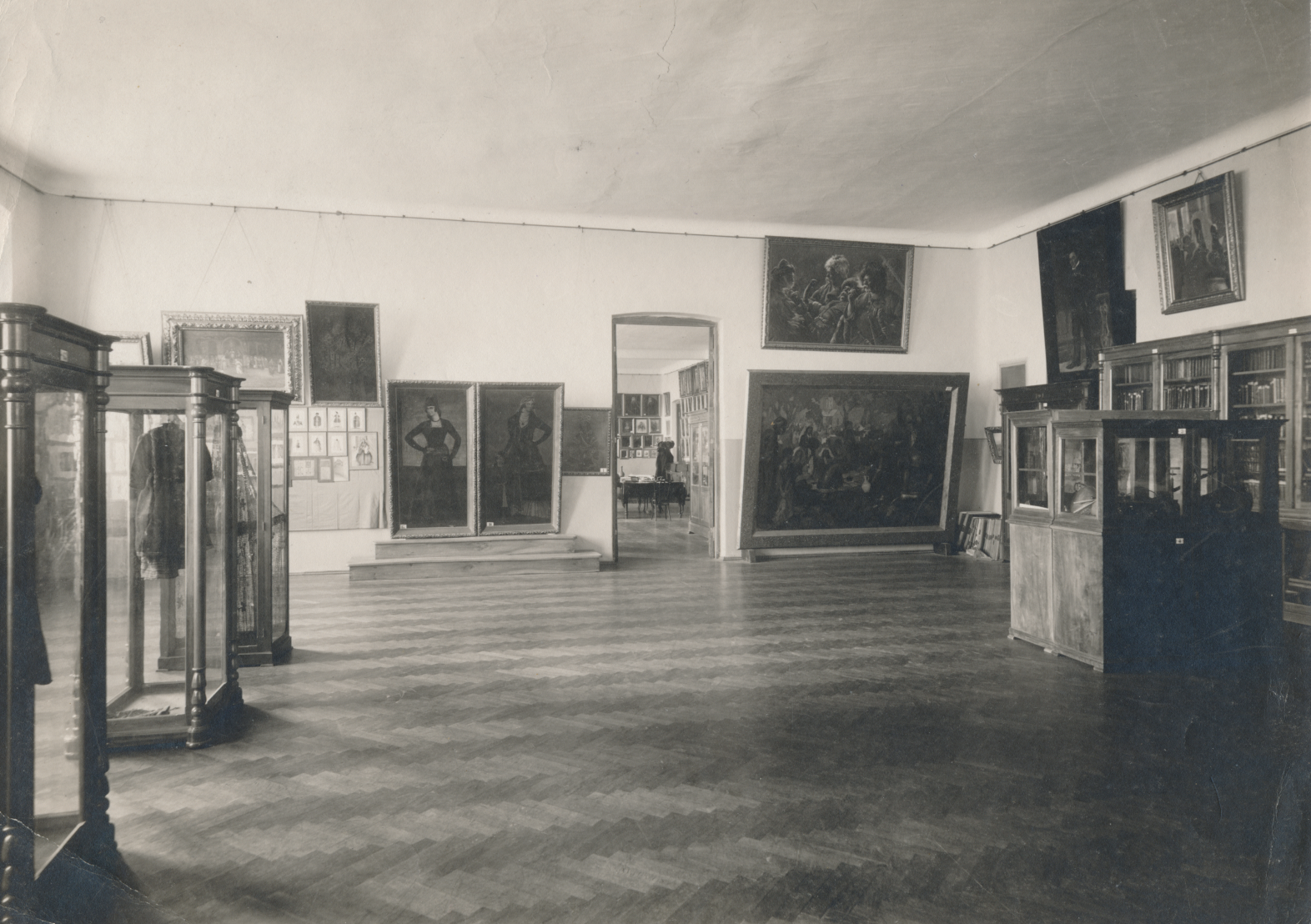
One of the Exhibition Halls in the Museum “Metekhi”. Georgian National Museum. Shalva Amiranashvili Museum of fine arts.
Dimitri Shevardnadze was born in the village of Bakhvi (Ozurgeti district) on December 1st, 1885. After finishing Bakhvi Primary School, he successfully completed his education at Kutaisi Preparatory School. The progressive-minded teachers at the school noticed the future artist's thirst for knowledge and remarkable drawing skills. They recommended Dimitri Shevardnadze to the Chiatura Manganese Processing Black Stone Society in 1906, so that financial support was provided for him to continue his further professional training at the Munich Art Academy. Before departing for his studies at the Munich Academy of Arts, by order of this society the artist painted the iconostasis of Chiatura Mining and Technical College church.

Portraiture turned out to be the most important genre for Dimitri Shevardnadze's work. He was particularly attracted to self-portraits as the most effective means of becoming more familiar with himself.
Dimitri Shevardnadze. Self-portrait. 42x35. Oil on canvas. 1910. Georgian National Museum, Shalva Amiranashvili Museum of Fine Arts
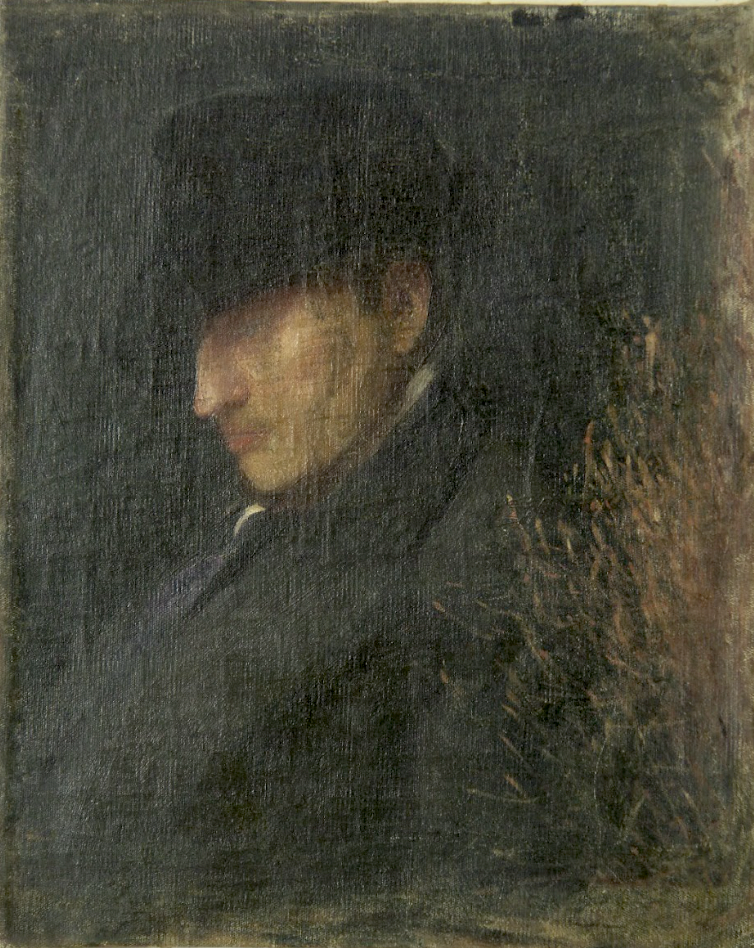
Dimitri Shevardnadze. Self-portrait. 38x46. Oil on canvas. 1916. Georgian National Museum. Shalva Amiranashvili Museum of Fine Arts
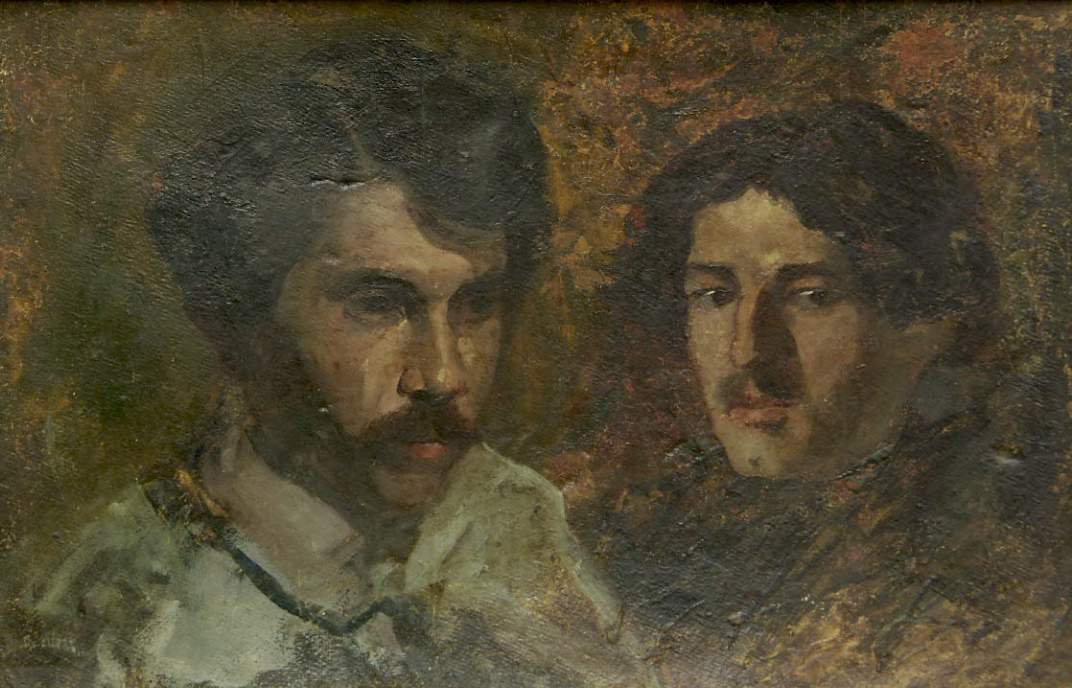
In a series of self-portraits, the artist revealed his ego in various contexts, enabling him to feel the distinct personality traits of individuals and to better separate them from the overall gray mass, and at the same time, to unlock different characters.
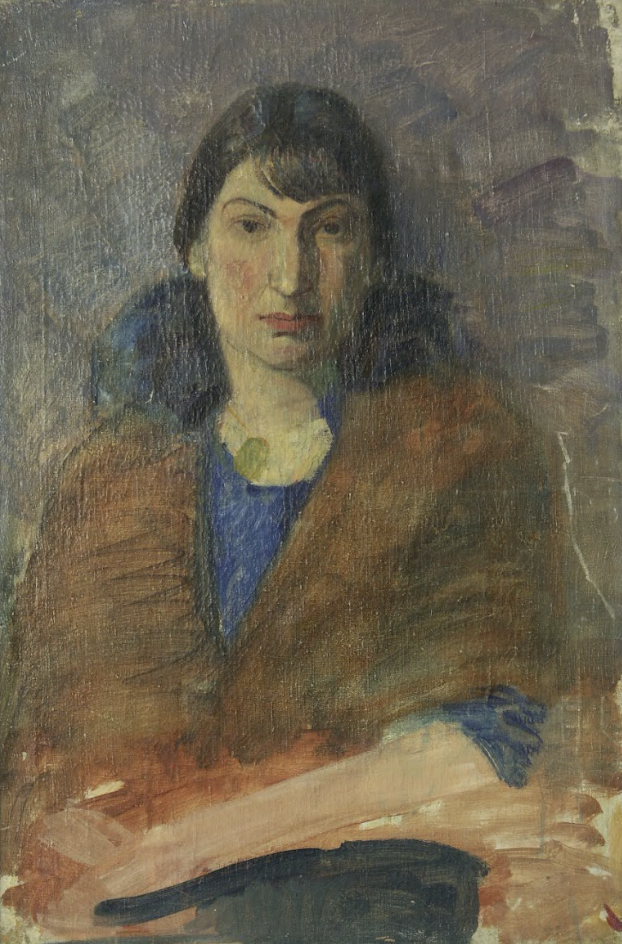
Dimitri Shevardnadze. Woman in a Cape. 70x47. Oil on canvas
Georgian National Museum, Shalva Amiranashvili Museum of Fine Arts
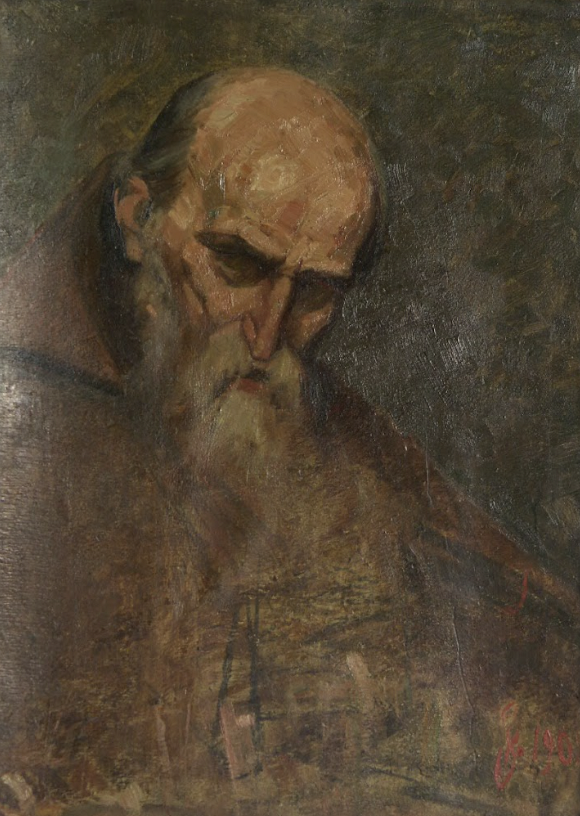
Dimitri Shevardnadze. Old Man. 63x46. Oil on cardboard. 1908
Georgian National Museum, Shalva Amiranashvili Museum of Fine Arts
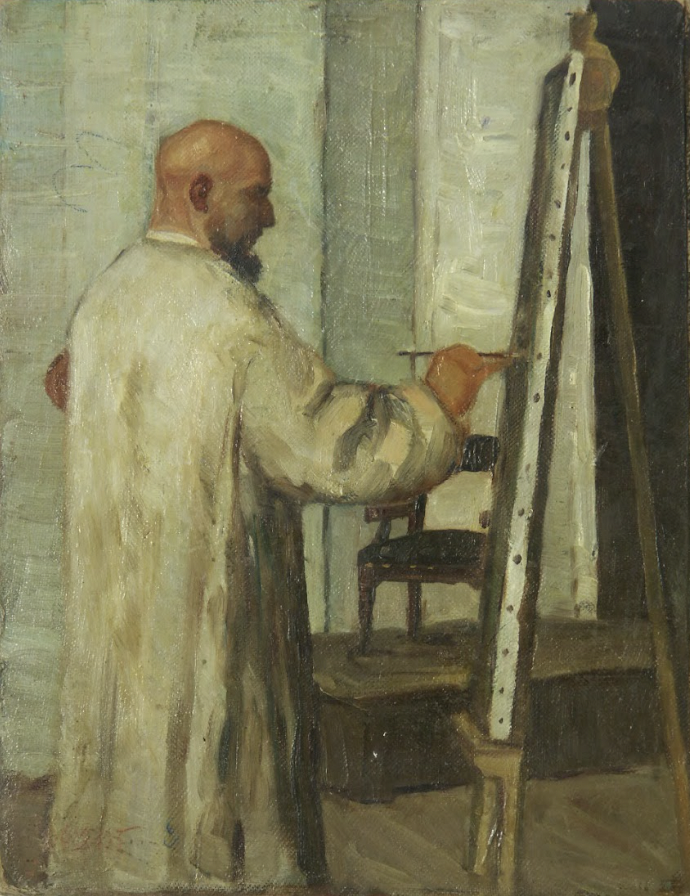
Dimitri Shevardnadze. Artist at the Easel. 34x27. Oil on cardboard. Georgian National Museum, Shalva Amiranashvili Museum of Fine Arts
The sunburned faces of Bavarian workers – men working the land, which were painted by the artist in Munich, create an optimistic mood with a bright, contrastive color palette and pleasant composition.

Dimitri Shevardnadze. Bavarian Man. 19.5x31.5. Oil on cardboard
Georgian National Museum, Shalva Amiranashvili Museum of Fine Arts
His collection of portraits of Bavarian women is unique. Dimitri Shevardnadze emphasizes their earnest, somewhat innocent expressions, the clear gaze in their eyes, and the corpulent forms of their bodies. The tranquility of the compositional structure of the portraits, the controlled, delicate painting, processing of texture, and modeling of form all speak of the artist's academic prowess that he had attained in Munich (see the following: "Portrait of a Young Bavarian Woman," "Woman with Braided Hair," and "Bavarian Middle-Aged Lady").

Dimitri Shevardnadze. Bavarian Woman. 50x34. 1914
Georgian National Museum, Shalva Amiranashvili Museum of Fine Arts
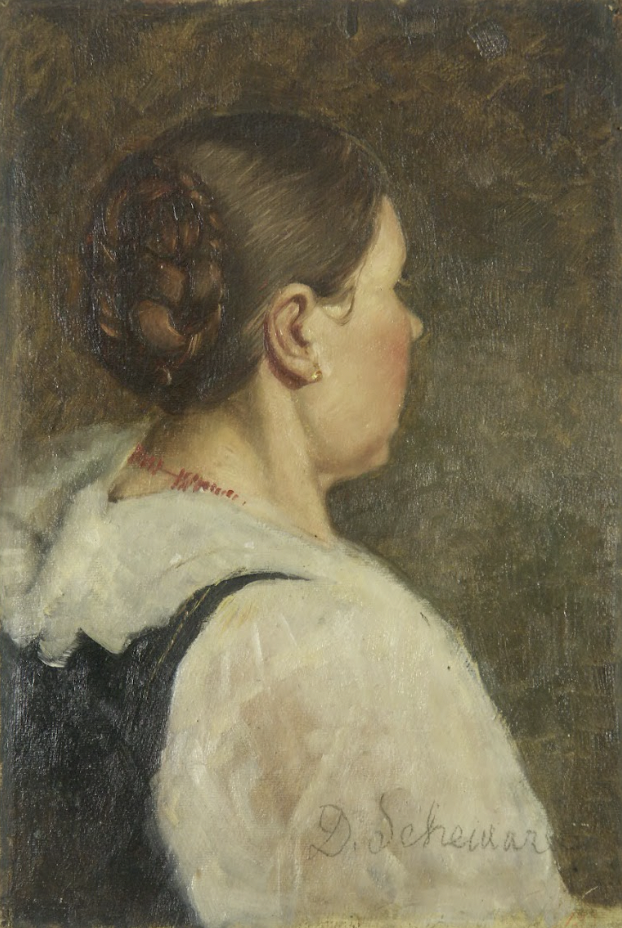
Dimitri Shevardnadze. Bavarian Woman with Beads. 50x34. Oil on cardboard
Georgian National Museum, Shalva Amiranashvili Museum of Fine Arts
The artist's ability to poetically feel life is revealed in his portrait sketches, which are executed with exciting, direct feelings. Such a perception of impressionistic, momentary sensations is facilitated by the lightness of the color palette. The hues chosen by the artist for these études appear to possess transparency as a result of their subtle complexities and gentle tonal transitions.
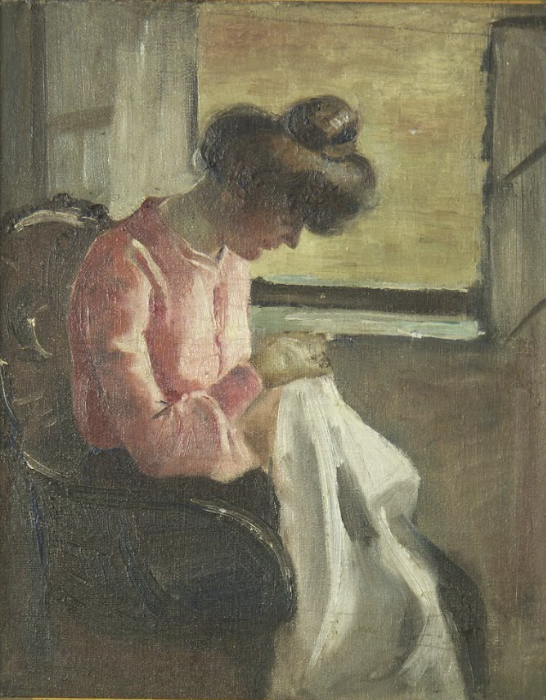
Dimitri Shevardnadze. Woman Sewing. 50x39. Oil on canvas
Georgian National Museum, Shalva Amiranashvili Museum of Fine Arts
While at Munich, Dimitri Shevardnadze became interested in modernist techniques that reflected the creative experience of post-Impressionism, particularly the work of Cézanne. Dimitri Shevardnadze's still-life series appears as follows:
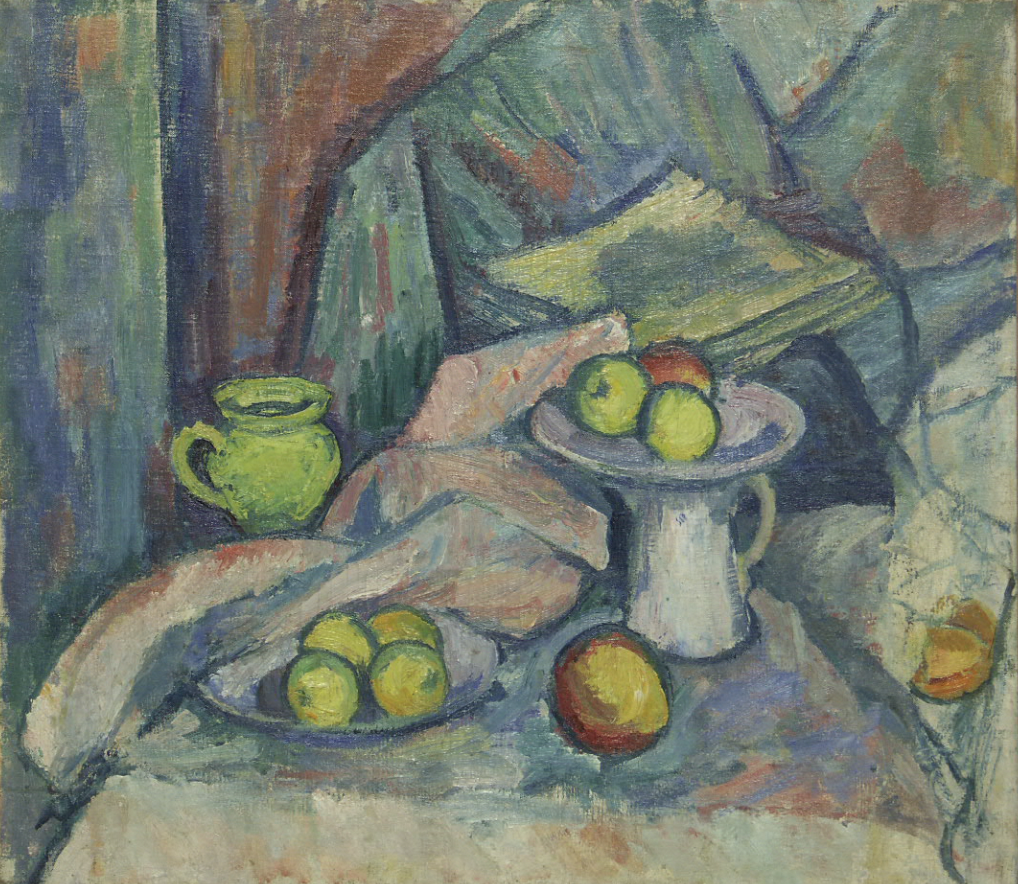
Dimitri Shevardnadze. Still Life. 62x70. Oil on canvas
Georgian National Museum, Shalva Amiranashvili Museum of Fine Arts
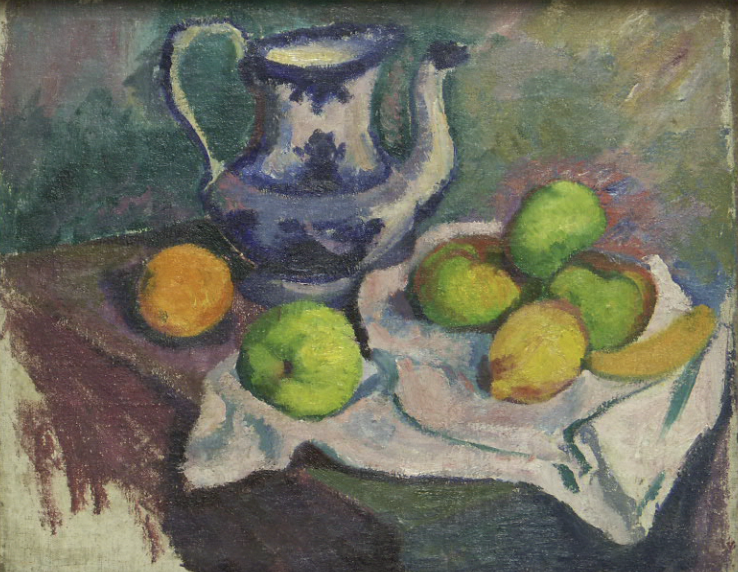
Dimitri Shevardnadze. Still Life. 40x50. Oil on canvas
Georgian National Museum, Shalva Amiranashvili Museum of Fine Arts
The intense color palette characteristic of Fauvism found expression in the landscape genre; and finally, the distortion and exaggeration of forms that is characteristic of Expressionism was reflected in his pictorial composition - " Harlequin".
Dimitri Shevardnadze. Autumn. 24x17. Oil on cardboard
Georgian National Museum, Shalva Amiranashvili Museum of Fine Arts
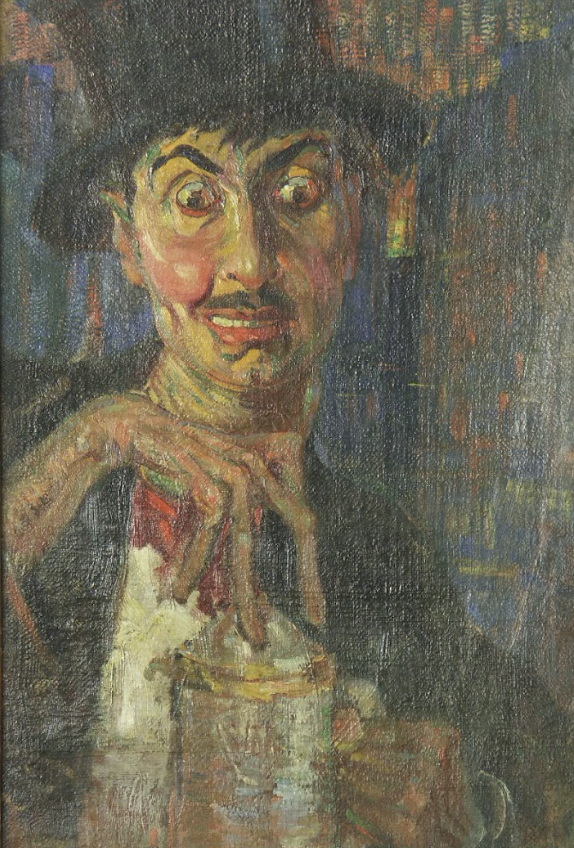
The artist worked diligently on a series of nude images in order to acquire further artistic expertise. Dimitri Shevardnadze explored various approaches to conveying the plasticity of the human body in his études, which were produced using oil paints on cardboard; the contour line at times sharply separates the bodily forms from the background, while at others, with a thin, light stroke of the brush, it follows the configuration of the body and merges with the background in a faint, light gradation of color.
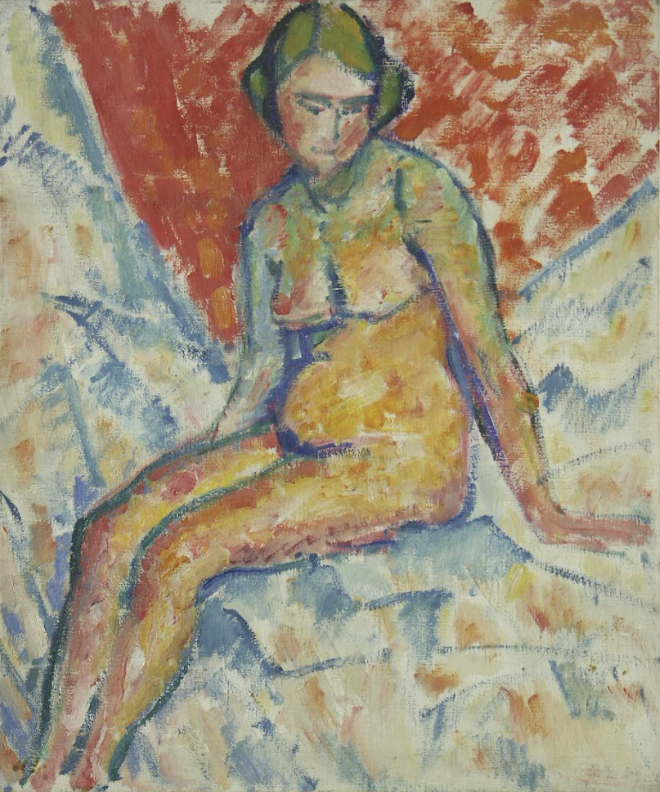
Dimitri Shevardnadze. Nude. 66x56. Oil on canvas
Georgian National Museum, Shalva Amiranashvili Museum of Fine Arts

Dimitri Shevardnadze. Nude photography. 68x49. Oil on cardbord
Georgian National Museum, Shalva Amiranashvili Museum of Fine Arts
Dimitri Shevardnadze returned to his native land in 1914, and in 1916 he continued his active artistic activity in parallel with the establishment of the first professional society of artists and the undertaking of other considerable public services. He painted a realistic picture of mathematics teacher Konstantin Vasiliev in 1918. Portraits of women in lighter, brighter hues and romantic tones were produced during the same years.
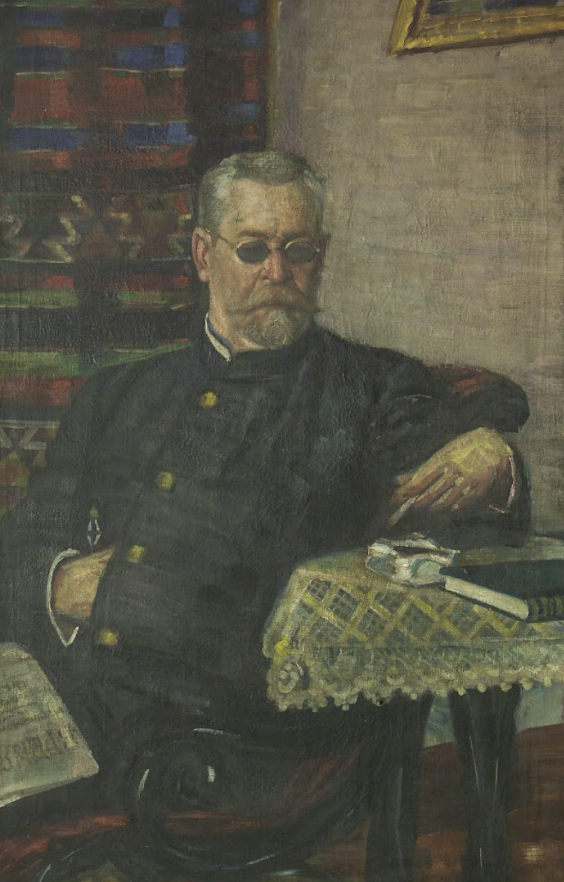
Dimitri Shevardnadze. Teacher of Mathematics K. Vasiliev. 128x78. Oil on canvas. 1918
Georgian National Museum, Shalva Amiranashvili Museum of Fine Arts

Georgian National Museum, Shalva Amiranashvili Museum of Fine Arts
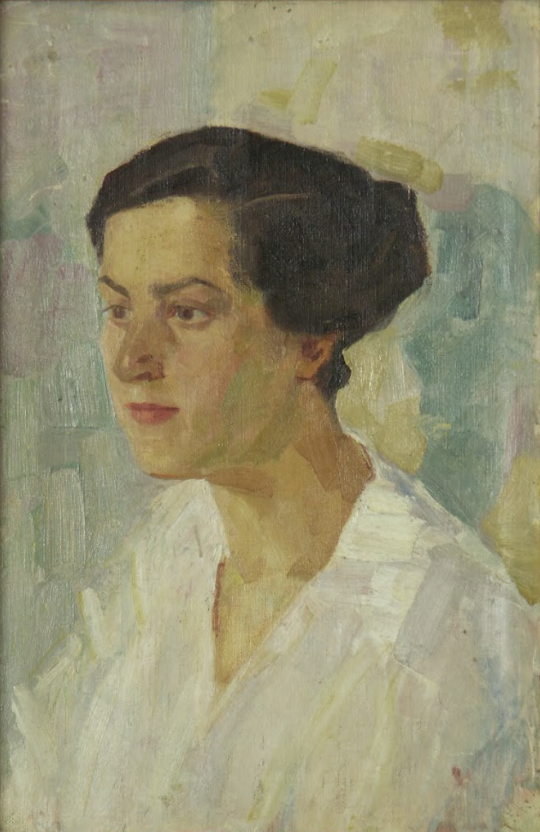
Dimitri Shevardnadze. Portrait of Lida Japaridze. 49x39. Oil on canvas. 1918
Georgian National Museum, Shalva Amiranashvili Museum of Fine Arts
His graphic portraits are extremely carefully designed. Of particular significance are the graphic sketches featuring images of the artist’s most cherished person, and the most important portraitist of Georgian culture – Ketevan Magalashvili.
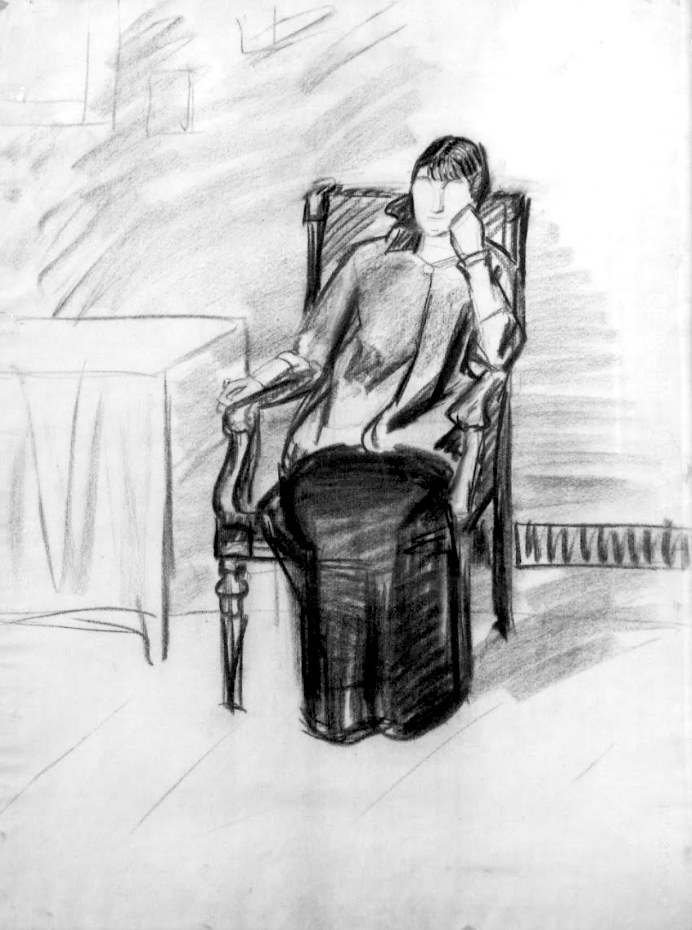
Dimitri Shevardnadze. Woman Sitting on a Couch (Ketevan Magalashvili). 63x48. Charcoal on paper
Georgian National Museum, Shalva Amiranashvili Museum of Fine Arts

Dimitri Shevardnadze. Woman Lying on a Couch (Ketevan Magalashvili). 63x48. Charcoal on paper
Gorgian National Museum, Shalva Amiranashvili Museum of Fine Arts
In 1918, when the long-awaited age of Georgia's independence arrived and there was an opportunity to restore state independence, by order of Ivane Javakhishvili, Dimitri Shevardnadze created the emblem and seal for the newly opened Tbilisi State University – a work of art that is still relevant to this day.
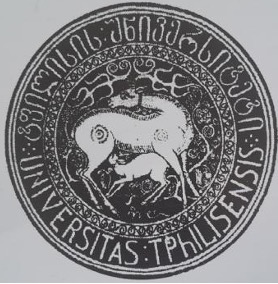
Dimitri Shevardnadze. Coat of arms of Tbilisi State University. 1918
Georgiaon National Museum, Shalva Amiranashvili Museum of Fine Arts
It is also noteworthy that the uniforms of the National Guard soldiers, as well as the designs for the banknotes and postage stamps of the newly independent Georgia were created based on sketches by Dimitri Shevardnadze.
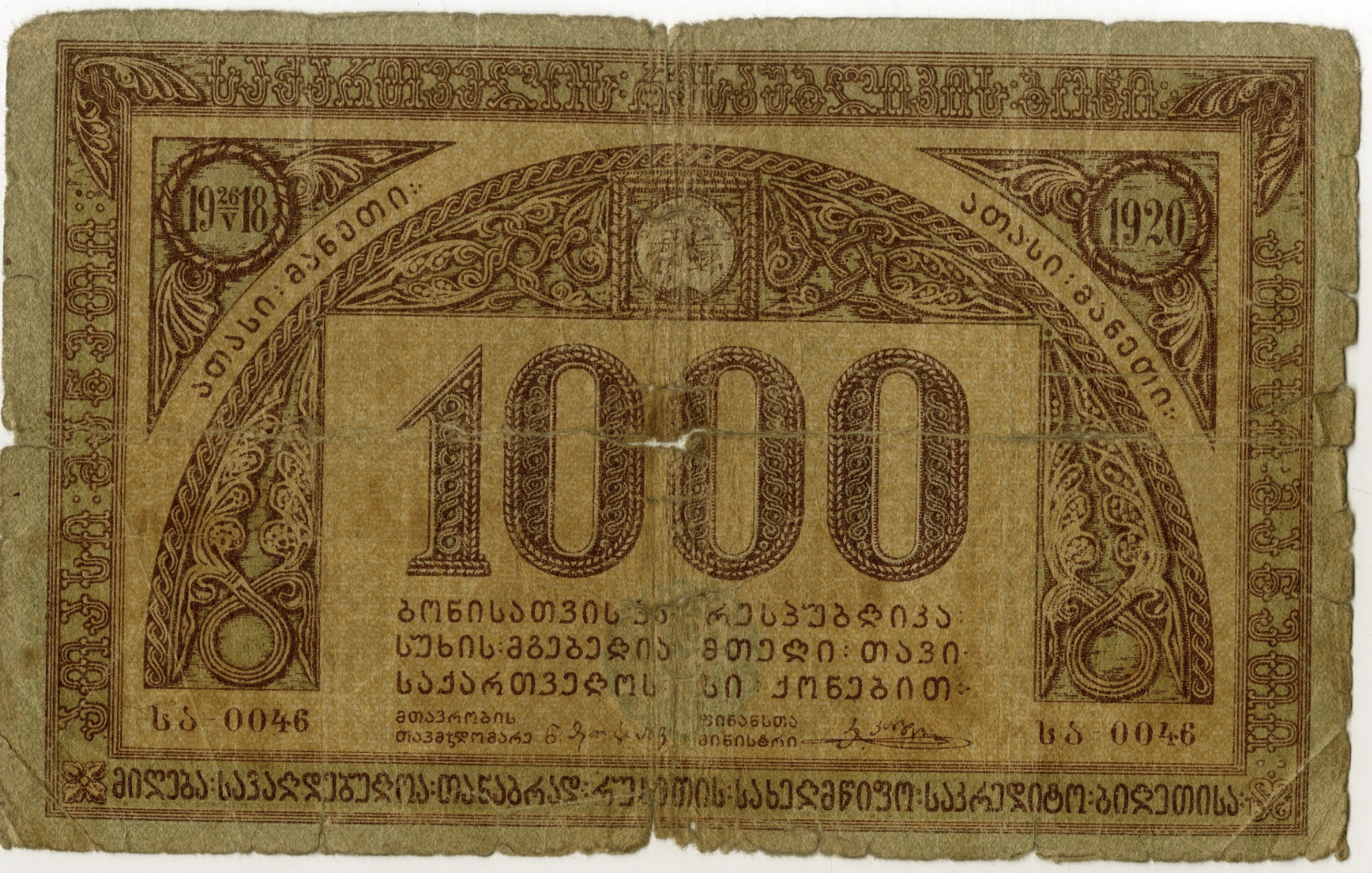
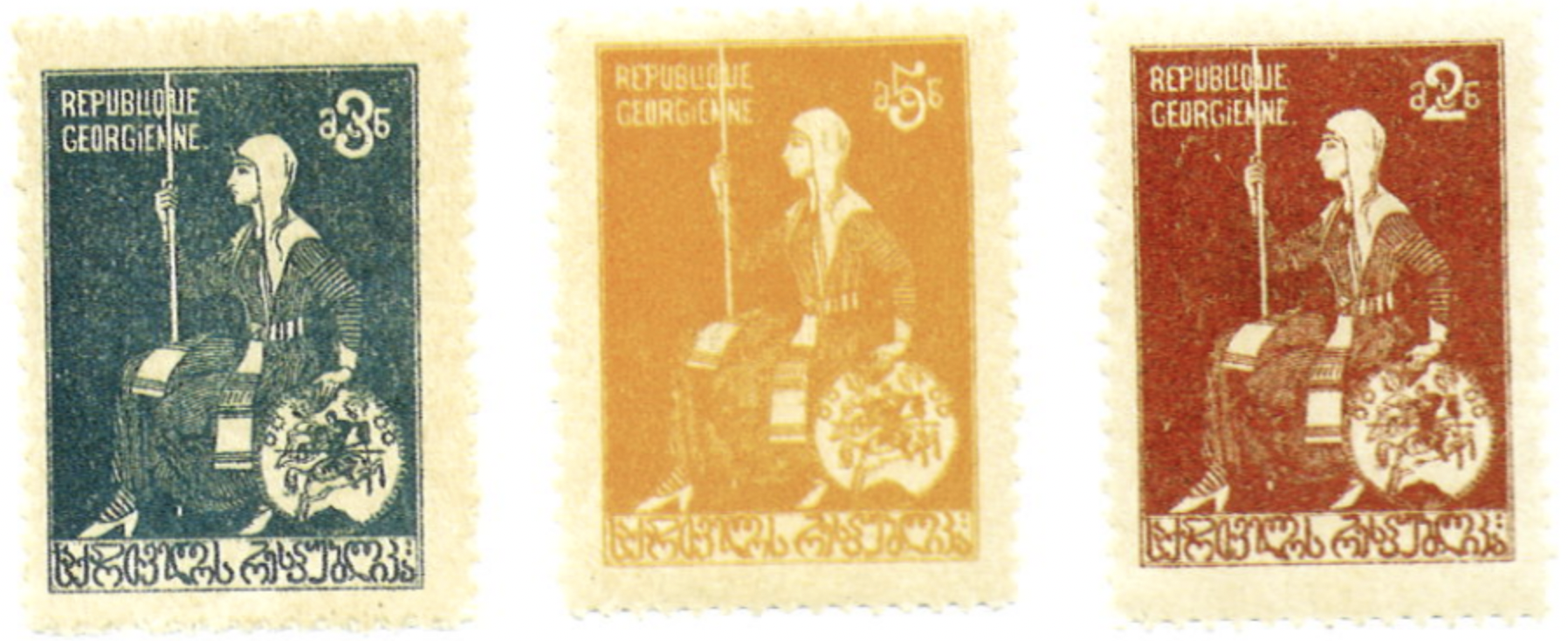
Dimitri Shevardnadze. Georgian National Banknote and Postage Stamps, 1918-1921
Private collection of Varazashvili family
It is impossible to discuss Dimitri Shevardnadze's graphic works without acknowledging his pivotal role in the significant creative project known as the Georgian typeface reform. In 1925, at the behest of the People's Commissariat of Education in Georgia, the artist became involved in updating the Georgian typeface.

Georgian Typeface Created by Dimitri Shevardnadze
The 1920s marked a significant period for Dimitri Shevardnadze, since he undertook crucial scenographic and cinematographic commissions that not only elevated his prominence, but also left an indelible impression on the history of Georgian culture. In 1924, Georgian theater reformer Kote Marjanishvili invited Shevardnadze to create sketches of the scenery and costumes for the updated production of Zakaria Paliashvili's opera "Abesalom and Eteri." The artist produced exceptionally interesting designs for the opera performance, adhering to the principle of historicism while seamlessly blending elements of Medieval Georgian and Oriental styles. It is worth noting that one of Shevardnadze’s sketches for this opera was presented in the Soviet pavilion at the 1925 Paris International Exhibition of Decorative Arts.
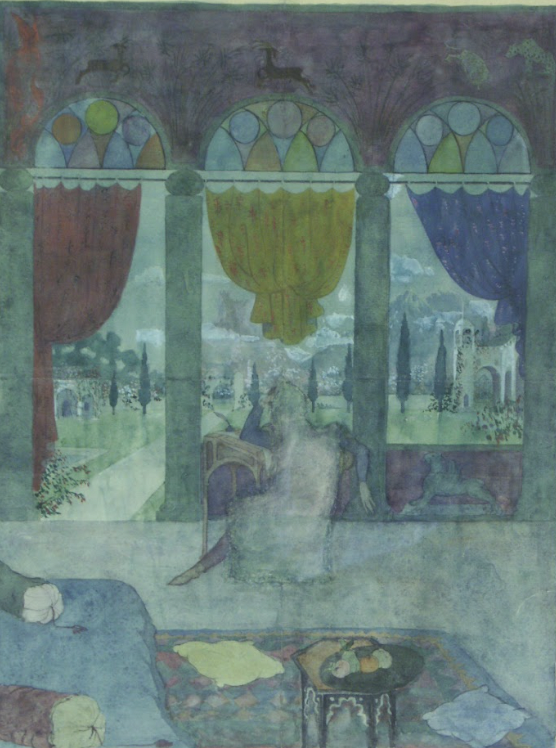
Dimitri Shevardnadze. Theater Curtain Design. 55x45. Watercolor and gouache on paper
Georgian National Museum, Shalva Amiranashvili Museum of Fine Arts
Dimitri Shevardnadze also created the artistic decoration for Meliton Balanchivadze's four-act opera "Tamar the Wily," and designed costume sketches for the updated performance of Dimitri Arakishvili's opera "The Legend of Shota Rustaveli." The set design of the first Georgian pantomime "Mzetamze" by composer Tamar Vakhvakhishvili, which was jointly created by Dimitri Shevardnadze and Lado Gudiashvili, is also noteworthy.
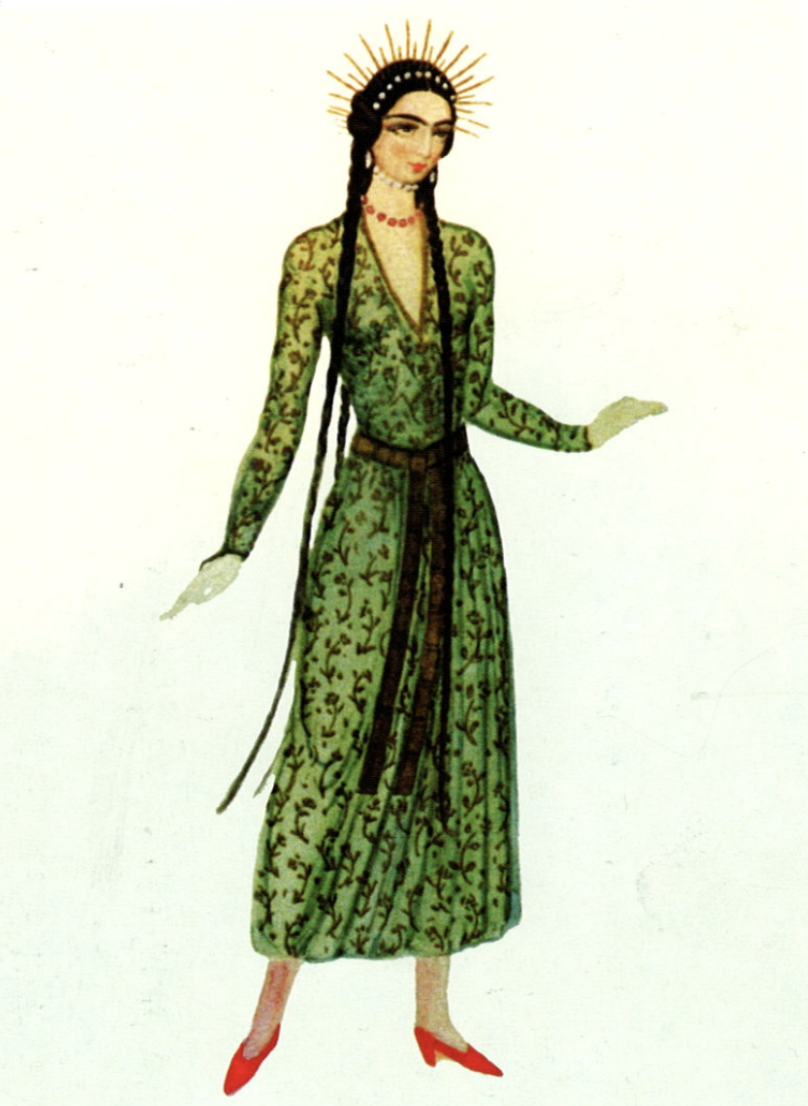
Dimitri Shevarnadze. Design of the Queen’s Clothing (“Mzetamze”). 22x16. Watercolor and gouache on paper. Private collection
In addition, Dimitri Shevardnadze played a pivotal role among Georgian artists who were actively involved at the very beginning of Georgian cinematography. He was the art director of the first Georgian feature film, "Qristine," which was directed by Alexandre Tsutsunava.
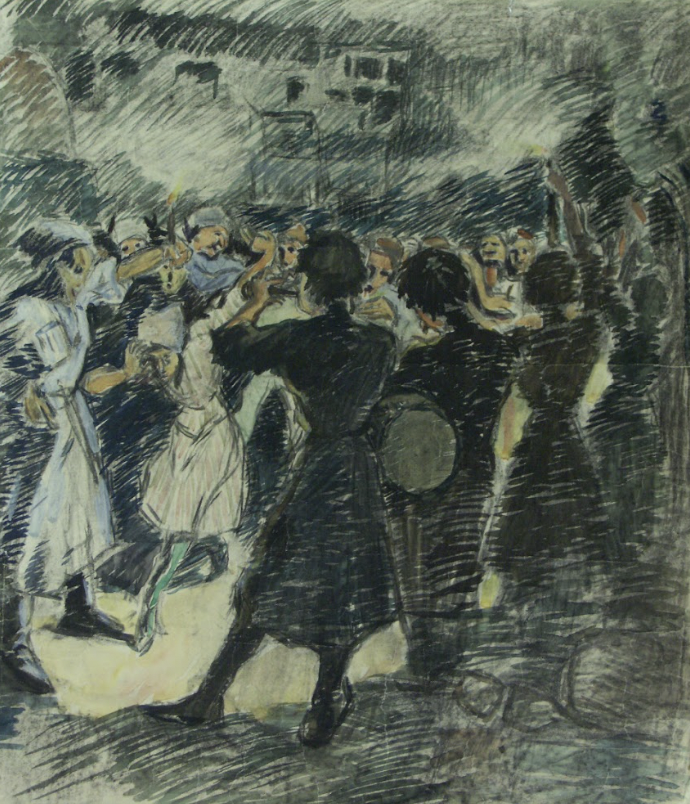
Dimitri Shevardnadze. Sketch for the Film “Qristine”; Georgian National Museum, Shalva Amiranashvili Museum of Fine Arts
Furthermore, he was the artistic designer for another two films directed by Tsutsunava: “Who Is Guilty?” based on the literary writings of Nino Nakashidze, and “Dzhanki Guriashi” (Rebellion in Guria), which was adapted from a historical novel by Egnate Ninoshvili. Dimitri Shevardnadze was the production designer for Nikoloz Shengelai's film "Eliso," based on a story by Alexandre Kazbegi. In 1937, which proved to be a fateful year for Shevardnadze, he once more became involved with the world of cinema. This time, he was invited to be the artistic adviser for the feature film "Journey to Arzrum," dedicated to the centenary of the death of Alexander Pushkin. It marked the final episode in Dimitri Shevardnadze’s creative journey, as he was taken into custody by Soviet security agents. His arrest was the consequence of his opposition to Lavrenti Beria's plan to demolish the 6th-century Metekhi Cathedral, the primary landmark of Tbilisi, in order to make way for construction of a massive monument to Shota Rustaveli. It is noteworthy that this incident followed the artist’s completion of one of his finest works: a graphic portrait of Shota Rustaveli, created in homage to the memory of the great poet.
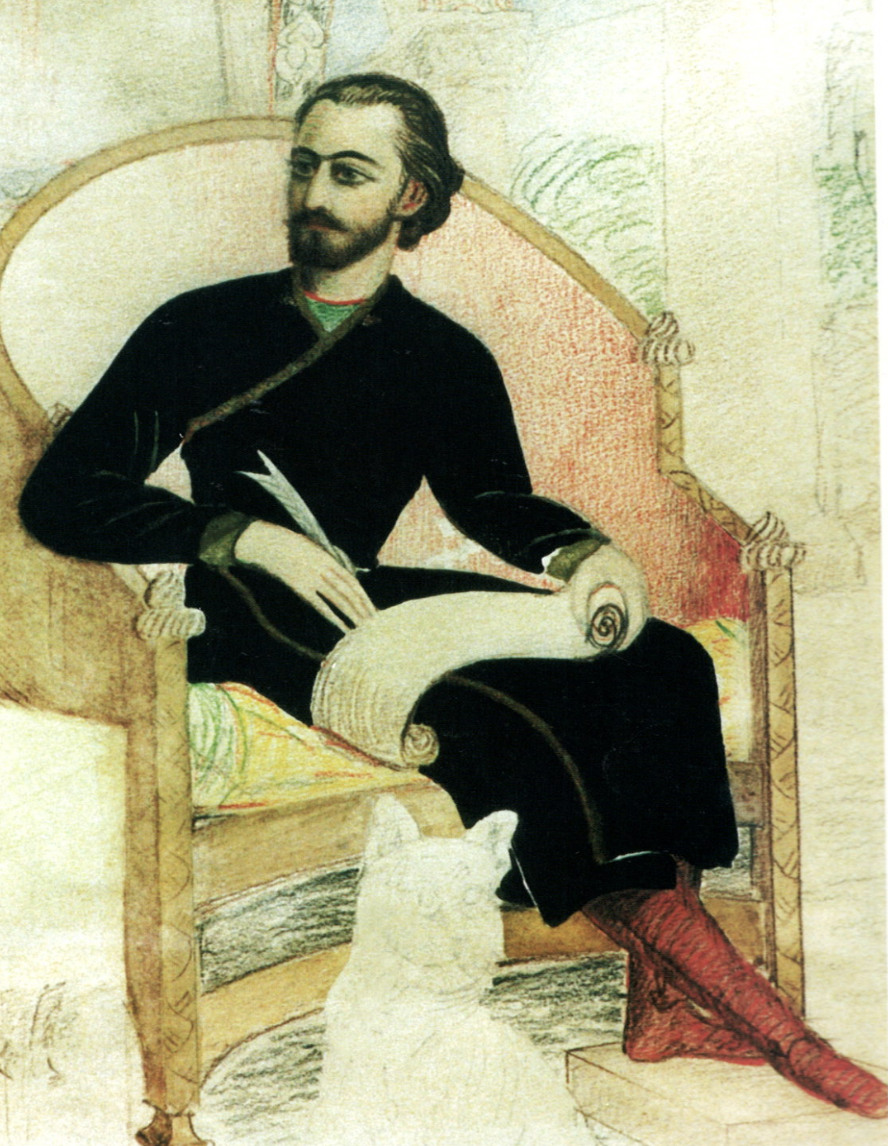
Dimitri Shevardnadze. Shota Rustaveli. 22x17. Pencil and gouache on paper. 1936. Private collection
In conclusion, the artist's creative work is characterized by several key elements including variety of genre, a diverse range of interests, and a commitment to achieving professional virtuosity. Even though Dimitri Shevardnadze, as a leading patron of Georgian culture, no longer had time to produce his own creative work, we can undoubtedly affirm that his artistic path stands out because of his exquisite and poetic interpretation of the world. This was grounded in a profound understanding of specific life material, and accomplished through the gradual refinement of his technique and a relentless commitment to honing his skills.